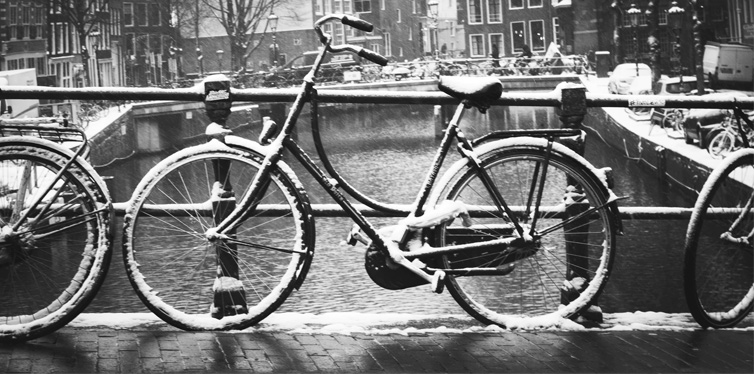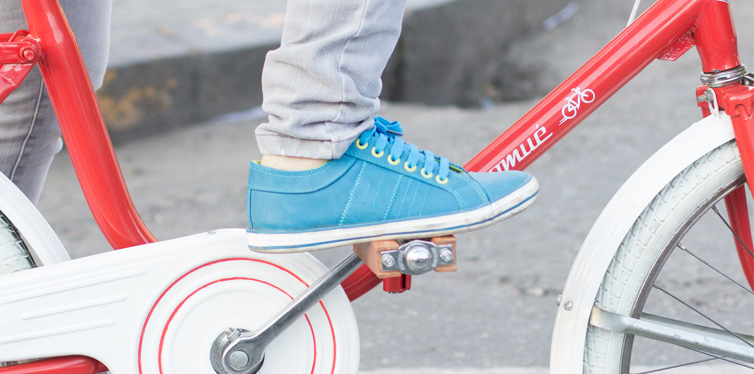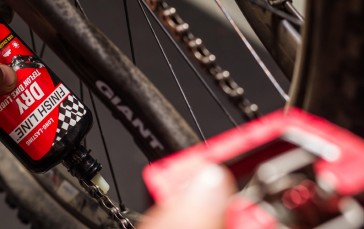Ride Safely With Your Winter Commute
As the number of cyclists increases, roads become over-congested in the rush hour commute to work. Even in the winter season, cyclists don’t back down; in fact, for many, it is a great way to enjoy the fresh winter air and keep their fitness level high. However, although cycling in winter is far less demanding than many people think, it’s vital to stay safe. To do this efficiently, the correct riding skills, equipment, and clothing are essential to take you safely through the winter on your bike or mountain bike. Here are 10 tips to ride safely with your winter commute.

1. Wear the Correct Cycling Clothing for the Winter
Cycling in winter requires a bit more planning than in summer. In cold, wet, and sometimes snowy conditions, it’s especially important to stay warm and dry yourself and not sweat too much (because that can lead to cooling). Instead of a very warm and thick jacket, several layers on top of each other are more effective, so you can react flexibly to changing weather conditions.
Warm underwear and baselayer, which are breathable, moisture-wicking and quick-drying at the same time, are indispensable for cycling and other sporting activities in the cold. You can carry several of these layers on top of each other and you’ll quickly find out which combination is ideal for you at which outdoor temperature. In addition, the functional garments can all be used throughout the year.
2. Wear a Windproof Cap
A windproof cap and some equally dense gloves make cycling in winter much more enjoyable. There are gloves and caps that protect against the wind alone and thus prevent cooling down. There are also thicker variants that additionally insulate and thus keep the fingers and head extra warm. On colder days, these types are more suitable, most especially for those who get cold easily.

3. Wear the Correct Cycling Footwear
As with the right winter clothing, it is also advisable to have the correct footwear. Cycling footwear requires the use of overshoes to protect against wind, rain, and mud. There are also windproof variants, such as those that are 100% waterproof and natural and also insulated for particularly cold days. They can be worn comfortably for use on a road bike or mountain bike.
4. Make Your Bike Tires Safe for the Winter
Cycling in the winter means, in addition to muddy and damp conditions, snow and ice. So, before making long trips during winter, it’s also vital to observe your bike itself to make the necessary adjustments for safe riding. For example, good winter tires are essential. Not only cars have winter tires – even bicycles can benefit from special tires for cold, wet and slippery conditions. On the one hand, you have special spike tires and on the other, tires with special winter rubber compound as well as normal tires with a particularly pronounced profile to choose from.
Spike tires give you a clear plus in control on ice and snow. If your winter commute regularly confronts you with icy or snowy terrain, then upgrading to tires with spikes is highly recommended to be safer and more fun. For best control, especially for mountain bike where the front wheel must bring steering commands and braking power safely to the ground, a studded tire with many spikes will suffice (up to 240 spikes). Fewer spikes usually suffice at the rear wheel, as most of your weight provides more contact pressure and, above all, traction should be ensured.
While studded tires make sense, especially on solid snow and ice, fresh loose snow makes somewhat different demands. In general, in loose and deep snow, the wider the tire, the easier and safer. Even lowering the tire’s air pressure can noticeably help here.

5. Use Bicycle Lights and Reflectors
As the days get shorter and darker, good wheel lighting becomes essential to stay visible in traffic. In addition, this includes using reflectors and wearing clothing with reflective elements. In any case, a white front lamp and a red tail light are indispensable. Cyclists can also make use of a white front reflector and on the rear wheel, a red reflector or orange pedal reflectors.
For those who cycle urban areas, lamps with about 50 lumens provide adequate lighting. Those who frequently travel on unlit roads should rely on around 50-100 lumens at the front wheel to be able to see ahead.
6. Prevent Dirt From Entering the Parts
Rain, dirt and salted roads put a lot of weight on the bike over the winter season. This does not just mean the visible dirt on the frame and fork – water, mud, and salt also get into the bearings causing rust and premature wear.
If you are lucky to have the opportunity to leave your bike indoors such as in the basement or in a garage, it’s perfect, as the cold, snow and rain are bad for almost all parts of the bike.

7. Ensure Good Bicycle Care in Winter
In addition to regular washing, good bicycle care also includes the regular oiling of the chain and a constant check of the tires for air loss or damage; as well as a check of the brake pads which wear out much more quickly under wet and dirty conditions. And after a long winter season on the bike, a comprehensive spring service might also be needed, which you can either carry out yourself or by a specialist.
8. Ride Carefully
When cycling in winter, a reduction of speed in snowy and slippery conditions is needed. If your city offers cycle lanes, make use of it. Also, think carefully about how much you accelerate as chunks of ice can come as a surprise. What’s more, avoid braking in the curve; instead, you should reduce the speed beforehand and pedal smoothly, if at all. And if you feel very insecure and shaky, you can set the saddle a bit lower, so your feet have faster contact with the ground. The general rule is always to ride safely. Rather than rushing, it’s best to start your journey early and arrive relaxed.

9. Use Both Brakes
Two independent brakes are mandatory when cycling. The simultaneous careful braking on both wheels is the fastest and safest way to stop. If braking is no longer possible in case of surprising black ice, keep calm and let it roll out.
10. Be Considerate
When on the road, always keep in mind that other road users may also be limited and unsafe. Expect longer braking distances of other users, and above all, if you tend to dodge the road between vehicles, it is, therefore, necessary to keep your distance.










